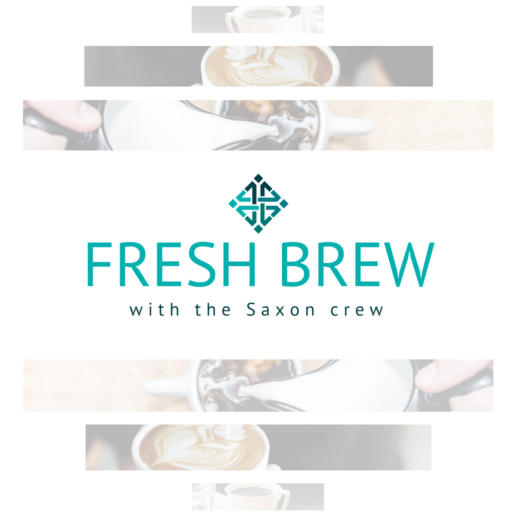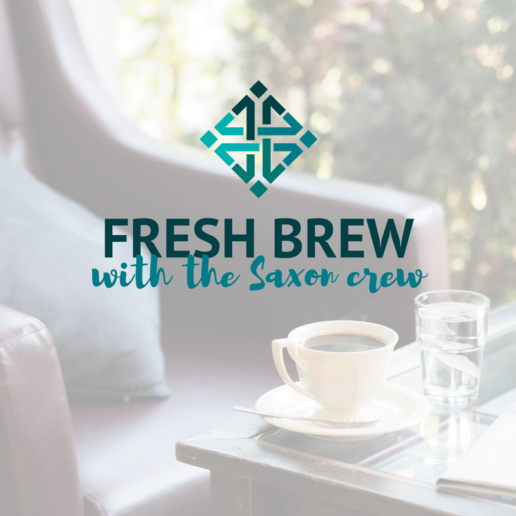Putting Humanity into HR Compliance: 3 Steps to Active Listening
How is your HR department communicating with your employees? One of the most common complaints people hear about HR professionals is that they don't listen. Read this blog post from SHRM for three practices of active listening.
When I work with executives and managers, a common complaint I hear about HR professionals is "They don't listen. They just tell."
So when I work with HR professionals, I encourage them to adopt three practices of active listening:
- The period-to-question-mark ratio.
- The EAAR listening method.
- Confront, then question.
The Period-to-Question-Mark Ratio
When you're engaged in a conversation, what's the ratio of your sentences that end with periods to those that end with question marks? If you're like most people, the ratio is overwhelmingly tilted toward sentences that end with periods. This could show that you are telling people what to do more often than you are looking for consensus on how to solve a problem. When you engage in a discussion with an executive, manager or employee, keep the ratio in mind. Strive to correct the imbalance by making yourself ask questions. The fact that you ask matters more than what the question is.
People I've coached have found that keeping the ratio in mind acts as a self-regulating device to ask more questions.
The EAAR Listening Method
E: Explore
A: Acknowledge
A: Apply
R: Response
It's a sequence. Begin the discussion with an exploratory, open-ended question: "Ms. Manager, what are the reasons that led you to conclude Mr. Employee should be fired?" "Tell me more." "Please share some examples." "Help me understand."
Once you've explored the other person's position and reasons for it, move to acknowledgment. Get the person to acknowledge that you understand his or her point. "So, Ms. Manager, if I understand you correctly, you believe Mr. Employee should be terminated because of the following reasons… Is that correct?
Although critical, the acknowledge step is often overlooked. Instead of confirming the understanding, the listener makes an assumption, which often proves erroneous and leads to unnecessary conflict. The EAAR method eliminates this possibility. If the person says, "No, that's not my position," simply go back to the exploration step: "I'm sorry. Please explain what I missed."
In your response, apply portions of what the person said, even actual words the person used. Even if your response isn't substantively what the person originally sought, this approach creates optimal conditions for acceptance.
"Ms. Manager, I agree with you that Mr. Employee's behavior is unacceptable. What you described [list the employee's actions] makes a compelling case. However, because of the following reasons, I think termination now would be premature and present undue legal risk.
"Nevertheless, I'm happy to work with you on an intervention strategy. If Mr. Employee is willing and able to close the gap in your legitimate management expectations, he will do so. If not, we will be in a much stronger position to terminate his employment, and I will support you."
Many HR professionals have told me that when they've used the EAAR method, conversations they feared would turn ugly became positive. Instead of a clash of wills and arguments, the discussion became collaborative and solution-oriented.
Confront, Then Question
What if you are the bearer of bad news? You must deliver a message you know won't make the recipient happy.
The approach here is to confront, then question. Make a short opening statement. State your position succinctly and without elaboration. Next, switch to question mode.
You can think of this approach as beginning the EAAR method with a short opening response to frame the conversation.
"Mr. Executive, based on our investigation, we found that Mr. Employee in your department engaged in actions that violate our anti-harassment policy. Although we understand he has been with the company for a long time and is one of your best performers, given the seriousness of the misconduct, we believe the appropriate action is termination of his employment."
Next, go to question mode: "What do you think?" "What questions do you have?" "How do you see things at this point?"
Assuming the executive doesn't respond by saying "Great idea! Go for it!" and wants to argue his or her point, pivot to exploration and start the EAAR process at that point. "I want to make sure I understand you, so please tell me what you agree with, what you disagree with and your reasons."
After that comes your acknowledgment: "Let me make sure I understand you. You agree that Mr. Employee's behavior was unacceptable and violated policy. However, you disagree that the proper remedy is termination. Instead, you recommend a suspension and written warning for these reasons. [List the reasons.] Is that accurate?"
Now you're ready to apply. From what the executive said, extract what you can use in your response.
"I appreciate the fact that you support our investigation and finding of misconduct. Our only disagreement is the appropriate remedy. Your points about Mr. Employee's long service and stellar performance are valid. Yet for these reasons [list them], I still believe termination is called for. How do you suggest we resolve our differing views? For example, should we present them to the CEO and let her decide?"
These types of conversations can go in all sorts of directions, including ones you don't anticipate. That's OK, so long as you don't lose sight of the value of questions during a dispute.
Avoid cross-examination questions, such as "Isn't it true that … ?" Your questions should not state or imply your view. They should be curiosity-based, as you're genuinely trying to find out what the other person thinks.
The confront-then-question approach allows you to go directly to the heart of the matter. Even if you sense rising tension and hostility, the negative emotions will soon be arrested by your open-ended, exploratory questions.
When HR professionals make a commitment to active listening, executives, managers and employees become their biggest fans instead of being their biggest critics.
SOURCE: Janove, J. (9 October 2019) "Putting Humanity into HR Compliance: 3 Steps to Active Listening" (Web Blog Post). Retrieved from https://www.shrm.org/resourcesandtools/hr-topics/employee-relations/pages/putting-humanity-into-hr-compliance-active-listening-.aspx
Getting digital transformation in healthcare on the fast track
Outdated protocols, overextended workforces and hundreds of wasted hours in administrative tasks are just a few of the opportunities for a digital overhaul in the healthcare industry. There are tremendous opportunities for digital transformation in the healthcare industry. Read this blog post to learn more.
At first glance, the healthcare field seems to be a goldmine for digital innovation. An overextended workforce, outdated protocols, hundreds of wasted hours in administrative tasks, a patient population that is wide open to digital solutions, a multitude of inefficiencies and redundancies — the opportunities for digital overhaul in healthcare are myriad.
Yet every year the graveyard of digital health tools gets more crowded as innovators fail to overcome healthcare’s uniquely complex barriers to their adoption.
Goldmine and graveyard, the tremendous opportunities for digital transformation in healthcare and the seemingly insurmountable barriers to its adoption are two sides of a coin. They spring from the same root causes: the lack of financial incentives to implement digital solutions; the high stakes that necessitate a cautious approach; and most significantly, providers’ seeming unwillingness to abandon proven workflows or sunk costs to take a chance on a disruptive solution.
This last cause is often the greatest barrier to getting innovation through the door.
Clinicians are the primary end-users of digital health, and a clinical champion can make all the difference in whether a solution is adopted. But in the face of the physician shortage in the United States, doctors don’t have time to trade out their proven workflows to take a risk on a solution that may or may not be successful, and will almost certainly take time to learn and implement into their practice. The majority of providers are already at capacity — 80% have no time to see more patients or take on more duties. Thus what seems like an unwillingness to change is often an inability to find the time to change.
Many physicians agree that digital tools and solutions are worthwhile in theory, but with an average workload of 40-60 hours a week, they don’t have the space in their schedules to evaluate these solutions. As it is, the amount of patients that a physician sees in a day (the most rewarding part of their jobs, according to 80% of doctors) has been reduced in recent years to make time for the mountains of non-clinical paperwork and administrative duties that they are responsible for.
Because of their packed schedules, physicians often default to the status quo for sanity’s sake: 40% of physicians see up to 20 patients per day, with another 40% seeing more (anywhere from 21 to over 70); and all spend almost a quarter of their day on administrative duties like inputting data into EMRs. If physicians do have a chance to sit down with innovators, it’s in the margins of their day — instead of an exciting opportunity for change, a pitch-meeting with an innovator represents another 15 minutes they have to take from their family at the end of a long day, an extra 10 minutes of sleep lost in the morning to get into the office early, the interruption of the small respite of a lunch break.
It’s no surprise that in a 2018 survey conducted by the Physician’s Foundation, 89% of physicians polled felt that they had somewhat to very little influence on changes in healthcare — they have no time to research chances to optimize their practice, and thus essentially no voice in its improvement. Yet only a physician has the kind of intimate knowledge of his or her needs and workflow that can drive effective innovations. Perhaps digital innovations have failed to take hold because the people making decisions around tools to help doctors are not doctors.
If we are going to break the barriers to digital transformation in healthcare, we need to expect physicians to think critically about how their job needs to evolve. And no one can do this without time to reflect on and evaluate the status quo. In the corporate world, executives and other employees are encouraged to do research, to take time in their schedules for professional development. Many tech giants — most famously Google, but also Facebook, Linkedin, Apple, and others — employ the 20% time model, where roughly one-fifth of an employee’s schedule is focused on personal side projects (those side projects have turned into Gmail, Google Maps, Twitter, Slack, and Groupon, to name a few). This is the model that we need to embrace in the healthcare system.
We need to look past the excuse that “doctors are traditionally conservative” and that is why innovation is dead in the water. While that narrative may have explained why cutting edge technology is not more readily adopted by physicians, there are other problems that it doesn’t account for — like why rates of compliance for new protocols and best practices are abysmally low. Those symptoms should point us to a different solution, a solution we can do something about. Not “doctors need to get with the times” but doctors need to get some time.
One solution is to advocate for a higher price per consultation that can eliminate the existential need to pack daily schedules with patient appointments. Under the current model, doctors are incentivized to take as many appointments as possible, double — even triple — booking slots to squeeze as much productivity out of current rates of reimbursement. But with increased reimbursement per consultation, physicians can more easily cover the cost of their salaries for their employers, which can then allow providers to take more time out of the clinic and in the office, thinking critically about their roles and how to improve their delivery of care.
Of course, this begs the question — who pays? The ones who stand to benefit most, of course. Giving physicians more time to develop professionally and research solutions is in the best interest of those who take on the burden of health costs, health insurance providers and the government (ie, taxpayers). Patient outcomes are almost guaranteed to improve when physicians have the time to stay up to date on best practices, and this directly reduces the burden of cost on those stakeholders.
Physician salaries represent a very small part of healthcare costs, paling in comparison to drugs and diagnostic care. If more money was paid to the physician on the front end to develop and implement more preventative solutions — by payers or government subsidies — the cost savings would increase exponentially, making an increase in physician salary an astute business move as well as one that can have a dramatic impact on patients’ lives.
SOURCE: Pablo Segura, J. (11 October 2019) "Getting digital transformation in healthcare on the fast track" (Web Blog Post). Retrieved from https://www.benefitnews.com/opinion/getting-digital-transformation-in-healthcare-on-the-fast-track
6 Practical Ways to Recruit More Strategically
How can HR departments recruit more strategically? Successful recruiters will go above and beyond and come up with ways to change how they work in order to deliver better results. Read this blog post for six low-cost things recruiters can do to become more strategic and to improve the hiring process at their organizations.
DALLAS—The most successful recruiters will go beyond doing more of the same and instead come up with ways to fundamentally change how they work in order to deliver better results.
"Every hiring manager wants more strategy from recruiters," said John Vlastelica, former recruiting director at Amazon and Expedia and founder of Recruiting Toolbox, a Seattle-based recruitment management consulting and training firm.
But what does that mean? "Just calling yourself a talent advisor doesn't mean you're going to be strategic," Vlastelica told attendees at the recent LinkedIn Talent Connect 2019 conference for recruiting and HR professionals. "PowerPoint decks do not make you strategic. Strategic does not mean being innovative. Business executives want speed, quality and diversity."
He shared six low-cost, practical things recruiters can do to become more strategic and to improve the hiring process at their organizations.
1. Get Hiring Managers Involved Early
The companies that are most strategic about pipeline recruiting get hiring managers engaged at the start of the process, Vlastelica said. "Every hiring manager I've spoken to wants pipelines, and they see that as being your job, not theirs," he said. But candidates are more likely to respond to outreach from hiring managers than recruiters.
Vlastelica advised talent acquisition professionals to train managers on how "to show up online"; by that, he meant "be thought leaders who engage with the communities they will be sourcing from and have conversations across social media channels that aren't just interviews of potential candidates.
"Getting them to be more visible among the communities they want to hire from is key to getting passive talent," he said. Hiring managers can also help by hosting meetups, game nights, sourcing jams and thought-leader webinars.
2. Know Your Source-of-Hire Mix
Vlastelica said facilities management company Sodexo recently realized that 90 percent of the source of hire for one of its core higher-volume jobs was internal candidates, so it changed the role to an internal requisition.
"Take a look at common roles and see what kind of internal versus external fill you have," he said. "Have a conversation with your department leaders about the hiring mix they want and then allocate your resources to the jobs you intend to hire externally. That saves the company time and money and provides a good development opportunity for employees."
3. Give the Gift of Time
Hiring managers are busy, and most of the time recruiters are giving them more to do.
"Whenever you are able to give back time, you are winning," Vlastelica said.
The Walt Disney Co. recently decided that hiring managers didn't need to screen all candidates.
"What if recruiters were qualified to screen candidates and send finalists to onsite interviews?" he asked. "You'd be giving managers hundreds of hours back."
Another way to streamline the interview process is to reduce the number of people involved. Too many interviewers in the process leads to slow hiring and bad consensus decisions. How many interviews are needed depends on job function, but "you don't need 16 interviewers for most jobs," he said.
4. Help Your Candidates Out
If the candidates you bring in don't have much experience with interviewing, "it's important to set them up for success," Vlastelica said. "I want candidates to bring their best selves to the interview."
He recommended that recruiters coach them on what to expect and ask them if they would like to meet with any employee resource groups.
5. Change the Approval Process
One of the biggest misalignments between recruiters and the business is when the time-to-fill countdown starts. To talent acquisition professionals, the clock begins when the requisition is approved, or even when the job is posted. But for hiring managers, the process started weeks prior.
"Hiring managers hate the approval process for opening a new requisition," Vlastelica said. Talent acquisition leaders at KPMG studied turnover and discovered that they could predict position vacancies in advance for certain jobs.
"Why wait for people to resign before starting the hiring process? Start it earlier, so the approval is already done. This is a planning issue. Tell the business you need to open certain requisitions now if you want the jobs filled quickly when they're needed."
6. Conduct Batch Interviews
Batch interviews—grouping several onsite interviews on one day—serves both speed and quality, he said. "One of the biggest constraints we find in time-to-fill is scheduling. Scheduling can add five, 10, 20 days to your process, which is ridiculous."
Instead, Vlastelica recommended "finding high-volume open jobs you always need and plan the interview days far in advance—have dedicated sourcers and recruiters to fill 12 interviewing slots each day."
He said that was the strategy when he was at Amazon, with Mondays and Fridays reserved for interviews. "We made same-day decisions and sometimes same-day offers," he said.
SOURCE: Maurer, R. (14 October 2019) "6 Practical Ways to Recruit More Strategically" (Web Blog Post). Retrieved from https://www.shrm.org/resourcesandtools/hr-topics/talent-acquisition/pages/6-practical-ways-to-recruit-more-strategically.aspx
What would a workplace emergency-savings benefit look like?
Data from a recent survey indicates that a significant portion of American workers could face a financial emergency if they were hit with sudden bills, lost wages or other unforeseen expenses. Read this blog post to learn more about emergency-savings benefits.
An alarming number of workers don't have enough money saved away to carry them through even a short-lived financial emergency, and experts are urging employers to take steps to address that shortfall with changes to their benefits programs.
Survey data indicate that while savings rates vary based on a number of factors, substantial portions of American workers across income levels could face a financial emergency if they were hit with sudden medical bills, lost wages or other unforeseen expenses, such as a major home or car repair.
"Regardless of income we still see a significant percentage of people that do not have a rainy day fund that could cover three months of expenses," Craig Copeland, senior research associate at the Employee Benefit Research Institute, said on a recent online presentation the group hosted.
The AARP has been studying the issue, and recently reported that 53% of all American households have no emergency savings. Moreover, the retirement group reported a direct link between emergency funds and overall financial confidence. According to its recent report, Americans with rainy day funds are 2.5 times more likely to feel confident about their long-term financial prospects than those who do not.
"If people are living on such thin margins that an unexpected bill requires their complete attention and all existing resources to address it, it is extremely difficult to keep the longer-term in mind or to make progress toward longer-term goals," said Genevieve Melford, who helps lead a financial security program at the Aspen Institute.
As employers increasingly come to view emergency savings as a crucial element of their employees' financial well-being, more have been exploring a separate benefit to help encourage workers to put away money for some unforeseen contingency.
Catherine Harvey, senior policy advisor at the AARP's Public Policy Institute, has been taking a hard look at how workplace emergency savings benefits could be structured, what features would make them most attractive, and how, as a practical matter, employees could be moved to actually participate.
"There's a lot of evidence from behavioral science about what makes employer-based interventions effective, and not surprisingly one aspect of an effective program to maximize participation in an employee benefit is to make participation really easy," she said.
"That's true in 401(k)s, that's true in health programming, it's true in marketing -- any time that you get something in the mail or are automatically signed up for Spotify beyond your 50-day free trial you're subject to a default [that works] to make enrollment really easy," Harvey said.
Some employers have offered a feature that allows workers to split their paychecks through direct deposit into separate accounts, one being set aside for emergency savings. But the early analysis of those programs, which tend to rely on the employee proactively opting to set up and contribute to the emergency account via direct deposit -- rather than through auto-enrollment -- has found the results underwhelming.
"That's where we think automatic enrollment, that frictionless enrollment, really distinguishes this from everything else that's on the market right now," Harvey said.
"If split direct deposit were as powerful as it could be, more employers would be doing that and people would be saving for emergencies," she said. "We know that that's just not the case."
But emergency savings programs, executed properly, could become a key component of employers' expanding financial wellness benefits packages, a hot topic in the benefits world, but one where employers are still grappling with the best way to drive engagement.
"We know that information for employees on a website is not going to cut it," Harvey said. "Education alone just doesn't work, and so employers over the years have gotten really savvy and have taken up the behavioral finance tools and concepts to make participation the default."
The AARP also surveyed workers of a variety of income and age ranges about the types of features that would entice them to contribute to an emergency savings plan.
"Not surprisingly," Harvey said, survey respondents cited "the power of the employer match, which speaks to the incentive behind savings as being a very important feature -- one that basically blows all of the other features out of the water."
That held true across the board, as even workers who reported strong savings rates independent of an employer plan said they would welcome matching funds.
"If there's a match on the table, people don't want to leave dollars on the table," Harvey said.
In addition to a matching feature, workers AARP surveyed indicated strong preferences for programs that would protect their privacy, extend them complete control over access to their funds, and generally limit complicating red tape that would make the programs less functional.
"The idea here behind an employer-based emergency savings program is let the employee define the emergency," Harvey said. "Putting up rules and barriers, eligibility criteria, is just going to frustrate people and they won't use the money when it's needed at that moment."
SOURCE: Corbin, K. (11 October 2019) "What would a workplace emergency-savings benefit look like?" (Web Blog Post). Retrieved from https://www.benefitnews.com/news/what-would-a-workplace-emergency-savings-benefit-look-like
How 401(k) Taxes Work and How to Minimize the Tax Bill
Are you familiar with how 401(k) taxes work? Most 401(k) plans are tax-deferred, meaning that you won't pay income taxes until you withdraw the money you've put into your 401(k). Read this blog post for an overview of how these taxes work.
Most 401(k) plans are tax-deferred, which means you don’t pay income tax on the money you put into the account until you withdraw it. That makes the 401(k) not just a way to save for retirement; it’s also a great way to cut your tax bill. But there are a few rules about 401(k) taxes to know, as well as a few strategies that can get your tax bill even lower.
Here’s an overview of how 401(k) taxes work and how to pay less tax when the IRS asks for a cut of your retirement savings.
How do 401(k) taxes on contributions work?
Contributions to a traditional 401(k) plan come out of your paycheck before the IRS takes its cut. So if you earn $1,000 before taxes at work and you contribute $200 of it to your 401(k), that’s $200 less that you’ll be taxed on. When you file your tax return, you’d report $800 rather than $1,000.
- If your employer offers a Roth 401(k), that means you contribute after-tax money instead of pre-tax money as with the traditional 401(k). This has a few advantages (see the section about withdrawals).
- You still have to pay Medicare and Social Security taxes on your payroll contributions to a 401(k).
- In 2019, you can contribute up to $19,000 a year to a 401(k) plan, which means you can shield $19,000 a year from income taxes. If you’re 50 or older, you can contribute $25,000 in 2019.
- The annual contribution limit is per person, and it applies to all of your traditional or Roth 401(k) contributions in total.
- Your employer will send you a W-2 in January that shows how much it paid you during the previous calendar year, as well as how much you contributed to your 401(k) and how much withholding tax you paid.
Do 401(k) taxes apply while your money is in the account?
While money is in a traditional 401(k), you pay no taxes on investment gains, interest or dividends. This is true for a Roth 401(k), as well.
Roth 401(k) vs. Traditional 401(k)
| Traditional 401(k) | Roth 401(k) | |
| Tax treatment of contributions | Contributions are made pre-tax, which reduces your current adjusted gross income. | Contributions are made after taxes, with no effect on current adjusted gross income. Employer matching dollars must go into a pre-tax account and are taxed when distributed. |
| Tax treatment of withdrawals | Distributions in retirement are taxed as ordinary income. | No taxes on qualified distributions in retirement. |
| Withdrawal rules | Withdrawals of contributions and earnings are taxed. Distributions may be penalized if taken before age 59½, unless you meet one of the IRS exceptions. | Withdrawals of contributions and earnings are not taxed as long as the distribution is considered qualified by the IRS: The account has been held for five years or more and the distribution is:
Unlike a Roth IRA, you cannot withdraw contributions at any time. |
How do 401(k) taxes apply to withdrawals?
In technical terms, your contributions and the investment growth in a traditional 401(k) are tax-deferred — that is, you don’t pay taxes on the money until you make withdrawals from the account. At that point, you’ll owe income taxes to Uncle Sam. If you’re in a Roth 401(k), in most cases you won’t owe any taxes at all when you withdraw the money because you will have already paid the taxes upfront.
401(k) taxes if you withdraw the money in retirement
- For traditional 401(k)s, the money you withdraw is taxable as regular income — like income from a job — in the year you take the distribution (remember, you didn’t pay income taxes on it back when you put it in the account; now it’s time to pay the piper).
- For Roth 401(k)s, the money you withdraw is not taxable (you already paid the income taxes on it back when you put the money in the account).
- You can begin withdrawing money from your traditional 401(k) without penalty when you turn age 59½.
- You can begin withdrawing money from your Roth 401(k) without penalty once you’ve held the account for at least five years and you’re at least 59½.
- If you’ve retired, you have to start taking required minimum distributions from your account starting on April 1 of the year following the year in which you turn 70½.
- If you’re still working at age 70½, you can put off taking distributions from your traditional 401(k).
- If you don’t take the required minimum distribution when you’re supposed to, the IRS can assess a penalty of 50% of the amount not distributed.
- You can withdraw more than the minimum.
401(k) taxes if you withdraw the money early
For traditional 401(k)s, there are three big consequences of an early withdrawal or cashing out before age 59½:
- Taxes will be withheld. The IRS generally requires automatic withholding of 20% of a 401(k) early withdrawal for taxes. So if you withdraw the $10,000 in your 401(k) at age 40, you may get only about $8,000.
- The IRS will penalize you. If you withdraw money from your 401(k) before you’re 59½, the IRS usually assesses a 10% penalty when you file your tax return. That could mean giving the government another $1,000 of that $10,000 withdrawal.
- You may have less money for later, especially if the market is down when you start making withdrawals. That could have long-term consequences.
There are a lot of exceptions. This article has more details, but in a nutshell, you might be able to escape the IRS’s 10% penalty for early withdrawals from a traditional 401(k) if you:
- Receive the payout over time.
- Qualify for a hardship distribution with the plan administrator.
- Leave your job and are over a certain age.
- Are getting divorced.
- Are or become disabled.
- Put the money in another retirement account.
- Use the money to pay an IRS levy.
- Use the money to pay certain medical expenses.
- Were a disaster victim.
- Overcontributed to your 401(k).
- Were in the military.
- Die.
You can withdraw money from a Roth 401(k) early if you’ve held the account for at least five years and need the money due to disability or death.
7 quick tips to minimize 401(k) taxes
- Wait as long as you can to take money out of your account. Withdrawals are what can trigger taxes.
- If you must make an early withdrawal from a 401(k), see if you qualify for an exception that will help you avoid paying an early withdrawal penalty.
- See if you qualify for the Saver’s Credit on your contributions.
- Be careful with how you roll over your account. Rolling an old 401(k) account into another 401(k) or into an IRA usually won’t trigger taxes — if you get the money into the new account within 60 days. Otherwise, the IRS might consider the move a distribution, triggering taxes and maybe even a penalty.
- Borrow from your 401(k) instead of making an early withdrawal. Not all 401(k) plans offer loans, though. Also, in most circumstances you’ll need to repay the loan within five years and make regular payments. Check with your plan administrator for the rules.
- Use tax-loss harvesting. You might be able to offset the taxes on your 401(k) withdrawal by selling underperforming securities at a loss in some other regular investment account you might have. Those losses can offset some or all of the taxes on your 401(k) withdrawal.
- See a tax professional. There are other ways to minimize your 401(k) taxes, too, so find a qualified tax pro and discuss your options.
SOURCE: Orem, T. (19 September 2019) "How 401(k) Taxes Work and How to Minimize the Tax Bill" (Web Blog Post). Retrieved from https://www.nerdwallet.com/blog/taxes/401k-taxes/
Why mental health in the workplace matters — and what you can do about it
Did you know: Nearly two-thirds of missed workdays can be attributed to mental health conditions. Workplace mental health issues are more prevalent than many may think. Read this blog post to learn more about mental health in the workplace and what you can do about it.
What keeps your employees from showing up for work every day: Flu? Bad back? Car trouble?
Not if your workforce is typical of U.S. employees. The fact is, nearly two-thirds of missed workdays can be attributed to mental health conditions.
Mental health issues in the workplace are much more prevalent — and more serious — than you might think — and Mental Illness Awareness Week (Oct. 6–12) is a great time to think about it. Mental illness is one of the top causes of worker disability in this country, and another insurance company's recent research with employers and employees on mental health in the workplace showed 62% of employees felt mentally unwell at some time in the past year. Even more startling: Among those diagnosed with a mental health issue, 42% have come to work with suicidal feelings.
This type of presenteeism — where employees try to battle through despite their symptoms — can affect the productivity, work quality and morale of your entire team. Not only are those suffering less effective, their co-workers are likely confused and concerned about the behaviors they’re seeing.
The good news is there’s a lot you and your company can do to help.
Mental illness can cover a wide range of conditions. Anxiety disorders are the most common, affecting 40 million adults. They’re highly treatable, yet only 37% of those suffering receive treatment.
Depression — one of several mood disorders that also include seasonal affective disorder and bipolar disorder — is a leading cause of disability worldwide. About 16 million people live with major depression.
But mental health concerns aren’t limited to employees who’ve been diagnosed with a mental illness. Health, finances, personal family relationships, and job satisfaction are all triggers that affect workers’ mental well-being, according to another insurance company’s survey. Even supposedly “happy” events — getting married, having a baby — can cause tremendous stress.
Many employers — hopefully, your company is one — offer mental health resources to their employees to better handle illness and everyday stresses. These can include medical care, employee assistance programs, counseling referrals, and financial and legal counseling.
So far, so good. The problem, however, is a major gap between what HR professionals say they offer and what resources employees are aware of.
For example, 93% of employers in another insurance company’s survey say they offer an EAP — but only 38% of employees realize they have this benefit. Similarly, 90% of employers say their company medical plan includes mental health resources, but only 47% of employees know that. And a quarter of employees surveyed say they’re not aware of any mental health resources at all.
One reason for the lack of understanding about mental well-being resources is the social stigma attached to mental health, and it’s not just among workers: another insurance company’s survey showed 61% of employees feel there’s a stigma in workplace, and 51% of HR professionals agree. And nearly half of both groups say the stigma has stayed the same or gotten worse in the last five years, despite national public campaigns to normalize the conversation about mental wellness.
Most employees (81%) say the stigma associated with mental health issues prevents employees from seeking help. Many of those struggling keep their issues secret for fear of discrimination, reputational problems or job loss. Sadly, more than a quarter don’t disclose their mental issue to their employer because they’re ashamed.
What you can do to help
There are many ways you and your company can open the conversation about mental well-being and provide the resources your employees need to be productive and effective.
- Communicate with your workforce regularly about mental health resources available to them. Mental Illness Awareness Week (Oct. 6–12) and World Mental Health Day (Oct. 10) offer great opportunities to talk about the topic. Give these resources the same promotion as your other benefits.
- Encourage senior leaders to participate in the conversation about mental well-being. Showing top-down support helps create a more open, accepting environment.
- Educate managers about symptoms of mental health issues and how to accommodate employees who need help.
- Consider the full range of your benefits, beyond health care. For example, financial stress is one of the top factors affecting mental well-being. If you don’t already, consider offering financial planning services or counseling to help employees better plan for their future needs. Benefits such as disability insurance and life insurance — even voluntary coverage that employees pay for themselves — can provide peace of mind and help ease a financial burden during a stressful time.
- Offer flexible work schedules, including work-at-home arrangements to help employees create better work-life balance.
- Learn more about mental health issues and solutions, including more tips and best practices for your workplace. Another insurance company’s recent Mental Health Report is a good place to start.
SOURCE: Jackson, M. (7 October 2019) "Why mental health in the workplace matters — and what you can do about it" (Web Blog Post). Retrieved from https://www.benefitnews.com/opinion/why-mental-health-in-the-workplace-matters
5 ways employers can make diabetes education programs more inclusive
Employees struggling with diabetes often have to make difficult decisions when it comes to their medications. Often, it can be difficult to manage blood sugar daily and feel healthy enough to function at work. Read the following blog post from Employee Benefit News for five ways employers can make diabetes education programs more inclusive.
Diabetes doesn’t quit. Employees struggling with the disease often have to make difficult decisions about their medications. It can be hard to keep control of blood sugar every day and feel healthy enough to function well at work.
Many workers don’t tell their employer they have diabetes. Some 81% of benefits decision-makers believe employees with diabetes at their companies keep it a secret.
Giving voice to an issue is the first step toward solving it. Diabetes in the workplace is in need of attention: rates are rising in the U.S., as are the associated costs — unplanned missed workdays, reduced productivity and the stress associated with uncontrolled diabetes add up to billions of dollars per year.
To help employers find solutions, Roche Diabetes Care commissioned a survey of more than 200 benefits decision-makers at self-funded companies to learn their perceptions of the human and financial burden of diabetes. What’s clear is that addressing the myriad of concerns related to this condition is a top priority for benefits decision-makers; indeed, 70% say it keeps them awake at night.
Benefits decision-makers say the impact of diabetes on their companies is significant:
- More than one in four report diabetes results in increased costs to replace workers (28%), increased administrative and other indirect costs of managing absenteeism (29%);
- One in three believe diabetes results in indirect costs resulting from fatigue and understaffing as well as reduced productivity;
- One in four feel diabetes is responsible for poor morale among employees who must perform work to cover absent co-workers.
The majority (87%) agree it is vital that employers offer continual support to employees with diabetes. Listening, education and help simplifying everyday diabetes management emerge as ways employers can improve the health of their employees with diabetes and the company bottom lines. The following are five approaches to consider.
Cultivate a collaborative, supportive environment to encourage employees with diabetes to feel comfortable and at ease about sharing concerns.
Four in five (81%) benefits decision-makers surveyed say they believe employees keep their condition a secret. Fear of discrimination is one reason those with diabetes keep quiet along with the general sense that their colleagues and superiors just don’t know or understand what it’s like to live with the condition.
Secrets are also stressful. Employers can address this by including diabetes more frequently in workplace wellness education programs and discussions, and creating safe forums for employees with diabetes to share concerns and express their needs. Listening and making employees with diabetes part of a two-way dialogue demonstrate the company values not only their opinions but also their important contributions to the company community.
Designate private places at the office where employees with diabetes can test their blood sugar during the workday.
Some 90% of benefits decision-makers surveyed think their employees would value company access and time to monitor blood sugar or take injections.
Simplify daily diabetes management so employees have what they need to be in control of their blood sugar levels at home and at work.
People with diabetes have different concerns and different needs at different times. A company-sponsored program to simplify the daily decision-making and management of diabetes needs to be personalized, easily accessible and help the user keep track of their blood sugar levels automatically. Benefits decision-makers believe employers supported in this way would be:
- Less distracted and less stressed at work (37%);
- More productive (45%) and have better morale;
- Take fewer sick days (39%);
- Feel their employer cared about them (41%).
We have created a program that offers the elements that enable personalized accessible support. Participants say they feel more positively engaged in their daily management and more confident at work.
Demonstrate the value of supported employees with diabetes by measuring impact productivity and absenteeism.
Most of those surveyed say they believe company-supported programs that help employees with diabetes simplify daily management of the condition would have myriad benefits:
- 89% say it would lead to a higher quality of life and reduced sick time and related expenses;
- More than four in five say a company-supported program would result in more company loyalty and less turnover (83%) and contribute to increased productivity (84%);
- 90% believe employees with diabetes would feel more empowered at work if they participated in a company-supported program that helped them keep their blood sugar levels in control.
Consider conducting brief surveys of employees about their perceptions of diabetes. These can be done before or after education or awareness efforts are in place. For companies with support programs in place, surveys can be conducted among participants. Qualitative and quantitative data help demonstrate the value of these investments. Just asking the questions among employees show the company cares.
Show your successes; don’t just tell.
Show the value of educating about diabetes and supporting your employees with the condition. There are a number of ways to accomplish this. Collect and tell their stories. Create testimonials in articles for internal newsletters and videos that can be shown on monitors around the office. Stories are powerful ways to educate, build empathy and understanding, and perhaps most importantly, get the secret of diabetes out in the open.
SOURCE: Berman, A. (30 September 2019) "5 ways employers can make diabetes education programs more inclusive" (Web Blog Post). Retrieved from https://www.benefitnews.com/list/how-to-make-diabetes-education-programs-more-inclusive
Fresh Brew with Amy Wetherington
Welcome to our brand new segment, Fresh Brew, where we will be exploring the delicious coffees, teas, and snacks of some of our employees! You can look forward to our Fresh Brew blog post on the first Friday of every month.
“Most people tend to focus on one specific part of their financial standing (life, investments, daily living, savings, debit, etc). My advice is to look at your finances as a whole, not as individual units. Everything in your financial life is, in some way, linked together. Imagine your life as a puzzle and the only way to see the entire picture is to make sure you have all the correct pieces in place. If one piece is missing then the puzzle isn’t complete. My goal as an Account Manager is to maintain the integrity of what has already been built and to help bring those missing pieces to light.”
Amy Wetherington is an Account Manager at Saxon Financial Services.
Amy became a new resident of Ohio in February 2013. Growing up as a Floridian, she loves taking on new challenges and enjoys a life of excitement in the outdoors.
When not working, Amy enjoys exploring the city of Cincinnati, CrossFit, spending time with her family, and relaxing in the beauty of nature. Amy also enjoys a weekend getaway to visit her friends and family that still reside in Florida.


Rogue “Dead Guy Ale”
Amy’s favorite brew is the Rogue “Dead Guy Ale”.
“It has the perfect balance of malt and hops.”

Barbeque
Amy enjoys eating barbeque when sipping on her favorite brew.
“The tangy/smokey flavors of the BBQ would be complimented by the toasty/malty notes that Rogue “Dead Guy” provides.”
Providing an HSA, FSA, or HRA Health Plan for your Employees
When open enrollment hits annually, it is not uncommon for employers to feel exasperated when staring down a list of acronyms such as HSA, FSA and HRA. As it should go without saying, the most common first thought is, “What does any of this mean?” Even the most seasoned experts have difficulty with understanding the complexities of various care options. That’s why in this installment of CenterStage, Kelley Bell, a Group Health Benefits Consultant at Saxon Financial, is here to break down the ‘alphabet soup’ that is HSAs, FSAs and HRAs.

What Is an HSA?
An HSA stands for a Health Savings Account. Kelley stated that HSAs work in conjunction with your existing HDHP plan (given you already have one) to cover costs associated with eligible medical, dental and vision expenses. Available to open just like a bank savings account, Kelley said, “It is your account; yours if you leave the employer and can contribute as long as you have an HDHP and can use the funds until they are gone, even if you are no longer in an HDHP.” For most, this applies to retirement. If you are reasonably healthy throughout your working life, Kelley said you can carry a large HSA balance into retirement. At that point, the funds can be used to cover the out-of-pocket medical costs that often increase with you as you age.
In addition to all the above, certain tax advantages exist within an HSA plan:
- Contributions are excluded from federal income tax.
- Interest earned is tax referable.
- Withdrawals for eligible expenses are exempt from federal income tax.
HSAs are typically available through employers, but individuals can establish one, as well. Many banks offer HSA programs for their customers, meaning if your employer does not offer the benefit, you can create an HSA account there.
What Is an FSA?
An FSA is a Flexible Savings Account. Much like an HSA, these plans cover the payment of medical, dental and vision-related expenses, and contributions you make to the plan are tax-deductible. Similarly, when you open an FSA account, you’re typically provided with a debit card or checkbook, so the funds can be accessed in the account. However, Kelley stated an FSA plan has a catch: “An FSA cannot roll over unused funds from year to year and is not portable.” Therefore, any contributions made to the plan that have not been spent by the end of the year are forfeited.
Some employers, as Kelley noted, do have options that will help you avoid complete forfeiture of unused funds. Certain employers allow their employees to carry over up to $500 of unused funds into the following year, while others will extend the use of the funds for up to two and a half months into the new year. Employers generally will offer one or the other, but never both. Some, however, offer no such option at all.
Kelley mentioned general purpose FSA coverage, and stated it can “make you ineligible for HSA contributions.” She continued to add that certain types will not prevent HSA eligibility, i.e. limited FSA for vision, dental, parking or “post-deductible FSA” which reimburses you for preventative care or for medical expenses that are incurred “after the minimum annual HDHP deductible has been met.” As a result of forfeiting any unused funds in the account, an FSA is best used by someone who has ongoing and predictable medical expenses. In this situation, it is likely you will deplete the funds in the account, whereas if you are considered healthy and have limited medical expenses (i.e. minor illness, sinus infection), the potential for forfeiture is high, and you may have to forgo the account. FSAs are employer-sponsored and typically are an option as part of a ‘cafeteria plan’.
What Is an HRA?
An HRA is a Health Reimbursement Arrangement. Like the other plans described in this article, an HRA is a tax-free employer funded amount of money for healthcare expenses. Contributions, as Kelley explained, “can be excluded from gross income, meaning that won’t pay taxes on that money and reimbursements from the HRA are tax-free when used for qualified medical expenses.” Depending upon the type of HRA, unused funds may or may not be rolled over from one year to the next. However, employers may also allow employees to use their HRA funds even into their retirement.
The benefits of an HRA take action after the employee has met a specific portion (i.e. employee meets 1st $2500 of a $5000 deductible), making it easier for the employee to meet their high deductible. HRAs are good for employers who want more control over how their medical dollars are put to use. Naturally, if the employer is paying the cost of the HRA, it can be of an increased advantage than contributory health insurance premiums and direct payment for out-of-pocket expenses. With an HRA, the employer determines the reimbursements and does not have to contribute the same amount for all employee groups (i.e. tiers of employee coverage, employee/child, employee/spouse and family).
How Saxon Helps
It is important to understand the needs of every client and educate their employees on how to use their healthcare. Saxon values client education and service above all else. We make educating employees a priority and ensure their benefits are understood and easy to use. Saxon represents all of the major carriers, allowing us to secure the best plans and rates for you and your staff, which we review annually.
If you are considering offering an HSA, FSA or HRA insurance plan to your employees, contact Kelley Bell today at (937) 672-1547 or kbell@gosaxon.com to begin exploring the benefits of adding this superior level of coverage today.
SIMPLE IRA vs. 401(k): How to Pick the Right Plan
Should you choose a SIMPLE IRA or a 401(k) for retirement saving? There are pros and cons to both types for employers. Read this blog post from NerdWallet for more on these two plan types and how to choose the right one for you.
The decision between a SIMPLE IRA and a 401(k) is, at its core, a choice between simplicity and flexibility for employers.
The aptly named SIMPLE IRA, which stands for Savings Incentive Match Plan for Employees, is the more straightforward of the two options. It’s quick to set up, and ongoing maintenance is easy and inexpensive. But if you have employees, you are required to provide contributions to their accounts. (See our SIMPLE IRA explainer.)
Although a 401(k) plan can be more complex to establish and maintain, it provides higher contribution limits and gives you more flexibility to decide if and how you want to contribute to employee accounts. Another big difference is that you can opt for a Roth version of the plan, whereas the SIMPLE IRA allows no Roth provision.
SIMPLE IRA vs. 401(k)
Here are the need-to-know differences between SIMPLE IRAs and 401(k)s:
SIMPLE IRA |
401(k) |
|
| Employer eligibility | Employers with 100 or fewer employees | Any employer with one or more employees |
| Employee eligibility | All employees who have compensation of at least $5,000 in any prior 2 years, and are reasonably expected to earn at least $5,000 in the current year |
All employees at least 21 years old who worked at least 1,000 hours in a previous year |
| Employer contribution rules |
|
|
| Contribution limits |
|
|
| Administrative responsibilities | No annual tax filing requirements; annual plan details must be sent to employees | Subject to annual compliance testing to ensure plan does not favor highly compensated employees |
| Fees | Minimal account fees | Varies by plan |
| Investment options | Any investments available through the financial institution that holds accounts | Investment selection curated by employer and plan administrator |
| Pros |
|
|
| Cons |
|
|
| More details | What Is a SIMPLE IRA? | What Is a 401(k)? |
SOURCE: IRS.gov
SIMPLE IRA or 401(k): How to decide
Startup costs and ease of setup often dictate the choice between retirement savings plans. But there are other factors to consider as well. To help decide which plan is best, answer the following questions:
Why are you setting up a retirement plan?
For many small-business owners, the answer is that they’re trying to maximize their own retirement savings dollars. If that’s the case, contribution limits should weigh heavily in your decision. For high earners especially, the higher contribution limit of the 401(k) makes it a more attractive choice than a SIMPLE IRA.
How important is it to offer the Roth option?
As mentioned earlier, the IRS allows employers to offer a Roth 401(k). (Quick reminder: A Roth 401(k) is funded with after-tax contributions in exchange for tax-free distributions in retirement.) There is no Roth version of the SIMPLE IRA. The account is subject to many of the same rules as a traditional IRA: Contributions reduce your taxable income for the year, but distributions in retirement are taxed as ordinary income. That said, the IRS allows participants to save in both a SIMPLE IRA and a Roth IRA at the same time.
Will you need to adjust employer contributions?
Although a nice perk to attract potential employees, employer contributions are not required of companies that offer 401(k) plans. You also have the freedom to set vesting terms, which allows you to require employees remain employed by you for a set time before taking ownership of your contributions to their accounts. Employer contributions to employee SIMPLE IRA accounts are mandatory, though you can choose between two matching arrangements dictated by the IRS. Contributions to a SIMPLE IRA are immediately 100% vested.
You have other choices
If you are self-employed or a small-business owner, SIMPLE IRAs and 401(k) plans aren’t your only options. There are a variety of retirement plans at your disposal.
For example, if you run a business with no employees, a solo 401(k) is worth considering. As the employer and (your own) employee, you’re allowed to contribute a total of up to $56,000 in 2019 (or $62,000 if you’re age 50 or older).
A SEP IRA also has a high contribution limit for business owners and self-employed individuals, though there is no catch-up contribution for savers 50 or older. The drawbacks: Like the SIMPLE IRA, a SEP requires employers to contribute to eligible employee accounts, and no Roth version is allowed.
We’ve laid out the pros and cons for these and other retirement plan options for the self-employed.
SOURCE: Yochim, D. (8 June 2019) "SIMPLE IRA vs. 401(k): How to Pick the Right Plan" (Web Blog Post). Retrieved from https://www.nerdwallet.com/blog/investing/simple-ira-vs-401k-comparison-how-to-pick-the-right-plan/












